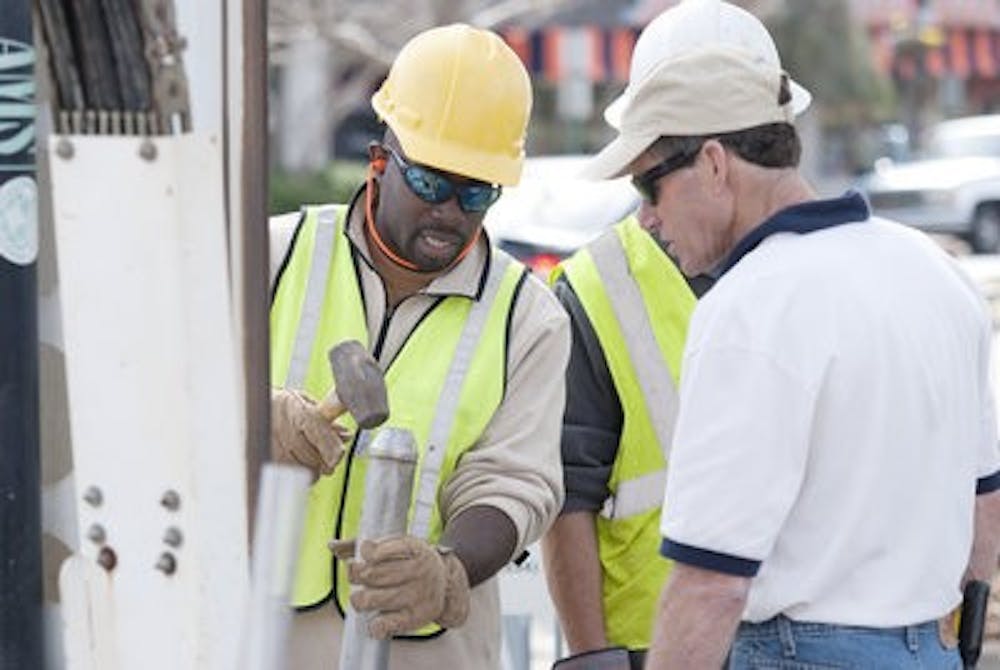The Toomer's oaks task force continued working this week to save the poisoned oaks and to determine the extent to which the lethal herbicide spread.
"We're essentially just trying to find out where it is and how far it's migrated," said Tom McCauley, environmental programs manager for the University Department of Risk and Safety.
McCauley and a team of contractors from the Birmingham-based firm Highland Technical Services Inc. drilled wells around the oaks to determine how deep the groundwater flows.
"We feel pretty confident that the material hasn't migrated beyond a four foot interval," McCauley said. "If that's the case, then groundwater, which is far deeper than that, hasn't been impacted."
McCauley said even if the herbicide had reached the groundwater, there would be little public health concern as it would be highly diluted. He also said the city of Auburn receives its water from lake water, not the groundwater in question.
McCauley said his team was also taking soil samples at depths up to 20 feet to determine how far the herbicide had traveled. The samples are being sent to the chemistry department for analysis and should be returned within a week.
Meanwhile, Gary Keever, professor of horticulture and task force head, said signs of the tree's exposure to the herbicide should be visible soon.
"Based on herbicide experts, we don't expect the herbicide to move up in the tree until the buds break," Keever said.
Keever said the buds are currently "swelling," and as the weather warms the tree will show its first leaves of spring. At that point, he said he expects them to brown and then shed. He said the tree could attempt to grow its leaves several more times, or if the herbicide is concentrated enough, the tree could die after the first shedding.
He said his team would be examining the buds every seven to 14 days and informing the Auburn Police Department of their findings.
"From a legal standpoint, the police want to determine the herbicide actually got in the tree," Keever said. "If not, you could say, well something else killed those trees."
Keever said the Toomer's incident has shown the diversity and the versatility of the University.
"That's one of the things that I've been most impressed with," Keever said. "It's not as if we've got to go to other universities or industry. They're right here. They might be upstairs, or over in the chemistry building, but we had all the expertise we needed right here."
Keever said he hopes the incident will make the Auburn community more conscious of the campus landscape.
"How many people thought about trees on campus before this, other than rolling Toomer's corner?" Keever said. "I hope next fall, when the football team is playing, people think about the campus when they're out there, that they use trash bins, that they don't intentionally dump their grill in the base of a tree, that they think about what it takes to remove toilet paper."
David Davis, senior project geologist with Highland Technical Services who helped in the gathering of the soil samples, said his work here brought the Auburn and University of Alabama communities together in surprising ways.
Davis, an Alabama graduate, said his father was an Auburn graduate. He said he was excited to work on a project that was "out of the norm."
Do you like this story? The Plainsman doesn't accept money from tuition or student fees, and we don't charge a subscription fee. But you can donate to support The Plainsman.





